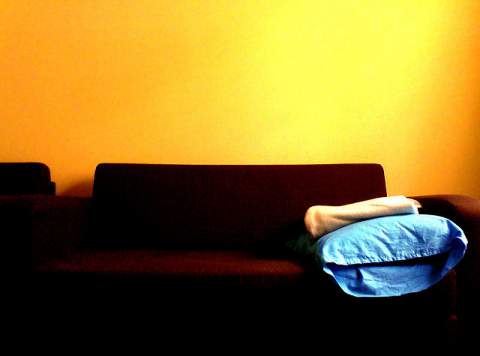
Itchy rashes, stuffy nose, coughing and difficulty in breathing are common symptoms of down pillow allergy. There are myths revolving around indoor allergies.
Dr. Nabeel Farooqui of Ohio State University says that you don’t need to get rid of feather pillows to prevent allergy, instead dust mites are the one which needs to be removed.
Further he says, that anti-allergen pillows can be equally allergic as loose woven casing in alternates allow dust mites and dander to accumulate.
However, other studies state that products made from bird products break in time and become airborne, which can be inhaled. Down pillow allergy symptoms can be triggered by allergenic proteins in birds, dust mites or molds.
Whatever the cause your immune system releases histamines to thwart the harmful substances. Person must be diagnosed to determine the specific allergen.
Down Pillow Allergy Symptoms
Main cause of indoor allergies is dust mites, which are about .4 millimeters and habitat on your dead skin cells. DerP1 is the potent allergen in feces of dust mites that irritate your skin.
Your room may seem hygienic to you, but studies state that there are millions of microscopic dust mites habituating in bed, pillows and under carpets. 10 percent of your old pillow’s weight is from dead dust mites.
Symptoms include:
- Asthma
- Wheezing
- Coughing
- Runny nose
- Sneezing
- Red itchy eyes
- Eczema
- Itching rashes
People who’re sensitive to feathers or dust mites can experience allergic reaction even after touching down pillow. Reactions like contact dermatitis and eczema flare-ups can be seen. In extreme cases these itchy rashes may turn to blister filled with fluid.
Nose, mouth and throat can be itchy. Postnasal drip and inflammation on mucous membrane can be experienced.
Allergic conjunctivitis, which results in itchy red eyes, will be experienced. Fluid migration to mucous membrane of eyes creates allergic symptoms of watery eyes.
Severe allergic reaction may result in asthma, wheezing and uneasy breathing. Mild down pillow allergy symptoms can be reduced by taking anti-histamines, while severe conditions need immediate medical attention.
How to get rid?
- Use air purifier or humidifier to remove dust mites, dander and other irritants.
- Use anti-allergic sheets or pillows if you can afford.
- Replace old pillows with new one or regularly wash them.
- Dust mites and other microscopic germs love moist place, put your bedding and pillows under sunlight for few hours.
- Don’t allow pets to enter your bed room.
- Most allergens can’t survive in hot temperature, so wash your bedding in steam.
As mentioned you must get diagnosed to know the main cause of down pillow allergy.

